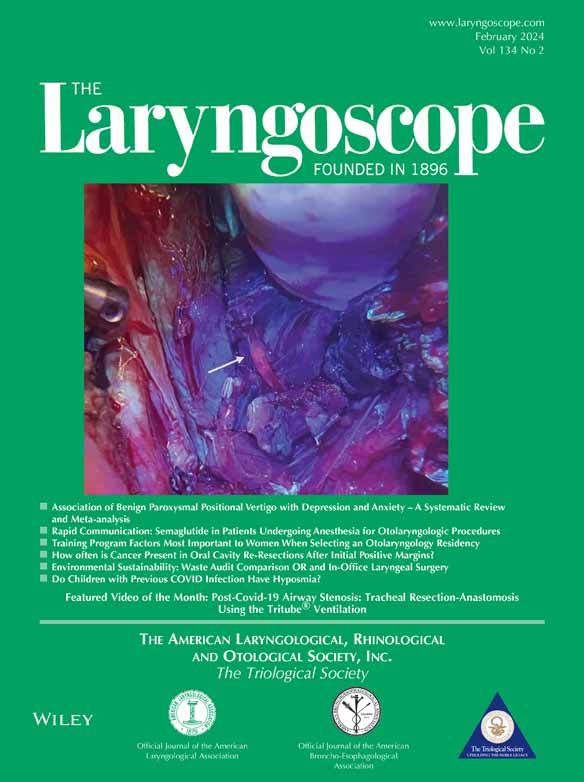Technical Challenges for Laryngeal Electromyography
This article was presented as a poster at the Combined Otolaryngology Spring Meeting in Boston, MA, USA, from May 3–7. 2023.
The authors have no funding, financial relationships, or conflicts of interest to disclose.
Abstract
Background/Objective
Laryngeal electromyography (LEMG) is a useful diagnostic test in the evaluation of vocal fold paralysis (VFP). This study investigates factors that can make LEMG challenging to perform.
Methods
Patients with subacute unilateral VFP presented for LEMG were prospectively enrolled. Demographic data including BMI, previous neck surgery, and anatomic factors were collected. Patient-reported pain related to the procedure was recorded on a visual analogue scale (VAS). Electromyographer and otolaryngologist recorded a consensus rating of the perceived difficulty in performing the test and confidence in using the results for clinical decision-making.
Results
A total of 111 patients (56.8% female) were enrolled between August 2015 and August 2018. The mean age was 55 ± 14 years, and the average body mass index (BMI) was 28.5 ± 6.4. The mean patient-reported VAS score for pain was 35 ± 24. Notably, 31.2% of the tests were considered “very easy,” 32.1% were considered “mildly challenging” and 23.9% and 12.8% were considered “moderately challenging” and “extremely challenging,” respectively, by the clinicians. Common factors affecting LEMG difficulty included poorly palpable surface anatomy (50.5%) and patient intolerance (15.6%). Clinicians felt confident in 76.1% of the test findings. Bivariate analyses showed that prior neck surgery is associated with elevated VAS (p = 0.02), but clinician-perceived difficulty of performing the test is not associated with elevated VAS scores (p = 0.55).
Conclusions
Majority of LEMG tests are well tolerated by patients. Physicians reported more confidence using LEMG for clinical decision-making when the test was easier to perform. Difficult surface anatomy and patient intolerance affects clinician confidence in integrating the test results with clinical care.
Level of Evidence
3 Laryngoscope, 134:831–834, 2024




